Thursday, May 3, 2012
Folsom Street Fair
From Wikipedia, the free encyclopedia
Jump to: navigation, search
A Folsom Street Fair banner (using the Leather Pride flag) hangs from a city lighting pole and marks Leather Pride Week in San Francisco, California.
A mixture of kink and leather subcultures mix at the festival. The man on the right may be into uniform and military interests while these other 2007 fair-goers seem to be interested in animal roleplay including a bare-chested man with his "pony".
The Folsom Street Fair (FSF) is an annual BDSM and leather subculture street fair held on the last Sunday in September and caps San Francisco's "Leather Pride Week". The Folsom Street Fair, sometimes simply referred to as "Folsom", takes place on Folsom Street between 7th and 12th Streets, in San Francisco's South of Market district.
The event started in 1984 and is California's third largest spectator event[citation needed] and the world's largest leather event and showcase for BDSM products and culture.[1] It has grown as a non-profit charity, and local and national non-profits benefit with all donations at the gates going to charity groups as well as numerous fundraising schemes within the festival including games, beverage booths and even spanking for donations to capitalize on the adult-themed exhibitionism.
The coordination agency, Folsom Street Events (FSE) is a registered charity and has also started similar events in Canada and Germany. In San Francisco they also manage Dore Alley Fair and special events like the "Folsom Street Fair Formal Leather Gala" with Joan Rivers which celebrated the 25th anniversary, and their annual circuit party "Magnitude" which has a leather subculture focus.[2][3][4]
Contents
[hide]
* 1 Origin of the leather subculture
* 2 History of the leather community in San Francisco
* 3 Beginnings of the Folsom Street Fair
* 4 Atmosphere
o 4.1 Folsom Street East
o 4.2 Folsom Europe
o 4.3 Folsom Fair North (FFN)
* 5 2007 poster controversy
* 6 See also
* 7 References
* 8 External links
[edit] Origin of the leather subculture
Main article: Leather subculture
Although sadomasochism has been practiced for many centuries, the modern gay leather scene in the United States developed beginning in 1945 when thousands of gay servicemen were given blue discharges from service after World War II and came to live in the major port cities of the United States to live in gay ghettos. In 1953 the film The Wild One appeared starring Marlon Brando and the more butch gays began to imitate him by wearing black leather jackets, a black leather cap, black leather boots, and jeans, and, if they could afford it, by also riding motorcycles.[5] Many gay servicemen had played sex games with each other where one played the top and the other played the bottom. In the 1950s, the magazine Bizarre familiarized people with sexual fetishism.
[edit] History of the leather community in San Francisco
The first proto-leather bar in San Francisco was the Sailor Boy Tavern, which opened in 1938 near the Embarcadero YMCA and catered to Navy boys looking for some male-to-male action.[5]
Folsom Street has been the center of San Francisco's men's leather community since the mid 1960s. Before centering in the South of Market neighborhood, leather friendly bars were located in the Embarcadero (Jack's On The Waterfront at 111 Embarcadero 1952-1963, On The Levee ?-1972), and the Tenderloin (The Spur Club at 126 Turk- raided and closed in 1959, The Why Not at 518 Ellis- opened and closed in 1960, The Hideaway at 438 Eddy - raided and closed in 1961). The first leather bar in SOMA was The Tool Box, which opened in 1961 at 339 4th St and closed in 1971.[6] It was made famous by the June 1964 Paul Welch Life Magazine article entitled Homosexuality In America, the first time a national publication reported on gay issues. Life's photographer was referred to The Tool Box by Hal Call, leader of the San Francisco chapter of the Mattachine Society, who had long worked to dispel the myth that all homosexual men were effeminate. The article opened with a two page spread of the mural of life size leathermen in the bar, painted by Chuck Arnett, a patron and employee.[7] The article described San Francisco as "The Gay Capital of America" and inspired many leathermen to move there.[6]
The first leather bar on Folsom Street was Febe's, on the southwest corner of 11th and Folsom, which opened July 25, 1966. The Stud bar, which opened in 1966 at 1535 Folsom St., was originally a Hells Angels hangout; by 1969 it had become a dance bar for hippies on the margins of the leather scene and had a psychedelic black light mural by Chuck Arnett (in 1987, it moved to 399 9th St. at Harrison). In 1967 A Taste of Leather, one of the first in-bar leather stores, was established at Febe's by Nick O'Demus. As of late 2009, A Taste of Leather announced it will be going out of business after 43 years.
In 1971, the modern bandana code came into use among leather people.
Many leather people went to the Embarcadero YMCA (at this YMCA doing weight training while wearing nothing but gym shoes and a jockstrap as well as nude swimming were both allowed until 1975, when women were enabled to become members of the YMCA). Leather people who worked out at the Embarcadero YMCA took advantage of the opportunity to get together with sailors when they came into town and rented rooms at the adjacent Embarcadero YMCA Hotel.
By the late 1970s Folsom's Miracle Mile had featured nearly 30 different leather bars, clubs, and merchants, most within walking distance of each other. These establishments included, in the order they were established: 1968 - Off the Levee (by the same owner of On The Levee), The Ramrod. 1971 - The In Between (later renamed The No Name), The Bootcamp. 1972 - The Barracks at 72 Hallam St., off Folsom between 7th and 8th Streets (a gay bathhouse for people into hardcore BDSM—each room was set up like a stage set to cater to a different sex fetish sex fantasy). 1973 - The Red Star Saloon (connected to the Barracks) (which featured new artwork by Chuck Arnett), the End Up (not a leather bar but a dance bar; however, many leather people who liked to dance went there), Folsom Prison, The Ambush, Big Town—a gay leather shopping mall on the south side of Folsom between 6th and 7th Streets 1975 - Hombre, The Catacombs (for those into hard core fisting), The Emporium. 1976 - The Trading Post, The Slot (for those into hardcore flagellation), The Hotel (later renamed The Handball Express—a place for those into hardcore fisting). 1977 - The Brig, The Balcony. 1978 - The Arena, The Roundup (later renamed The Watering Hole—a place for those into urolagnia), The Quarters, Black & Blue, Folsom Street Baths at 1015 Folsom (a BDSM gay bathhouse)(later renamed The Sutro Baths in 1980—the slogan of the Sutro Baths was "a rainbow of sexual preferences", which was inscribed on a banner above the orgy room, located where the main dance floor of 1015 Folsom now is. The Sutro Baths also admitted women and transsexuals.) . 1979 - The Stables at 1123 Folsom (for those who liked to dress as cowboys), The Trench (for those into hardcore urolagnia), The Hothouse on the northwest corner of 5th and Harrison (another BDSM gay bathhouse), Tailor of San Francisco, Mister S Leathers. 1980 - The Plunge—a gay BDSM bathhouse with a swimming pool on the northwest corner of 11th and Folsom (in 1983 the swimming pool was covered over and became the surface of the dance floor of the popular bisexual dance club the Oasis). 1981 - The Eagle at 398 12th St., as of 2010, was San Francisco's oldest leather bar, as well as its largest with its extensive outdoor patio, and it hosted many popular barbecues and beer busts to benefit charitable organization; however, it closed in June 2011 due to a dispute over its real estate.
The predecessor of the Folsom Street Fair was the CMC Carnival (California Motorcycle Club Carnival), a gay leather BDSM dance (with DJ's and a rock band) and fair, with vendors and a back room for casual sex, held on the second Sunday of November every year from 1966 to the last one in 1986 at various indoor venues including most often at the Seafarer's International Union Hall (referred to as Seaman’s Hall for short) in the Embarcadero area of SOMA. In the early 1970s, the CMC Carnival was attended by a few hundred people and by the time of the last large CMC Carnival in 1982 at what was then the Yellow Cab Building at Jones and Turk in the Tenderloin, it was attended by over 4,000 people.[8][9]
The "CMC Carnival" was organized by one of the leather motorcycle clubs, the California Motorcycle Club, with the help of other gay motorcycle clubs. The members of these gay motorcycle clubs rode mostly Harley Davidson motorcycles and on periodic weekends rode their motorcycles to outings at picnic grounds in the Sierra Nevada Mountains. The first gay motorcycle club in the United States was the Satyrs, founded in Los Angeles in 1954. The first gay motorcycle club in San Francisco was the Warlocks, which was founded in 1960, followed by the California Motorcycle Club, also founded in 1960 later in the year. By the mid-1960s, San Francisco's South of Market district had become the center of the gay motorcycle club scene and was home to motorcycle clubs such as the Barbary Coasters (founded in 1966) and the Constantines and the Cheaters (both founded in 1967).[10] These gay motorcycle clubs also organized many benefits for charity at various leather bars. During the 1970s and early 1980s one could see many dozens of motorcycles belonging to people who were members of these clubs parked up and down the length of Folsom Street on the Miracle Mile. Unfortunately the membership of these motorcycle clubs was decimated by the AIDS crisis beginning in 1982.[11]
In 1979 the newly formed San Francisco lesbian motorcycle club, Dykes on Bikes, led what was then called the San Francisco Gay Freedom Day Parade for the first time[12] and has done so ever since (since 1994, the event has been called the San Francisco Pride Parade). By the mid-1980s, lesbian motorcycle enthusiasts in other cities began to form motorcycle clubs.[10] In the 1980s and early 1990s, lesbian leatherwomen were often involved in helping to care for gay leathermen who had been stricken with AIDS.
Some leather people of the 1960s and 1970s felt that one wasn’t really a leather person but just a poseur unless one owned an actual motorcycle, preferably a Harley Davidson.[13]
[edit] Beginnings of the Folsom Street Fair
The community had been active in resisting the city's ambitious redevelopment program for the South of Market area throughout the 1970s. City officials had wanted to "revitalize" the historically blue collar, warehouse, industrial district by continuing successful high rise development already underway on Rincon Hill.
But as the AIDS epidemic unfolded in the 1980s, the community's relative autonomy from City Hall was dramatically weakened. The crisis became an opportunity for the city (in the name of public health) to close bathhouses and regulate bars, which they did beginning in 1984.[14]
As these establishments for the leather community were rapidly closing, a coalition of housing activists and community organizers decided to start a street fair. The fair would enhance the visibility of the community, provide a means for much-needed fundraising, and create opportunities for members of the leather community to connect to services and vital information (e.g., regarding safer sex) that bathhouses and bars might otherwise have been situated to distribute.[14]
Thanks to the success of the first Folsom Street Fair, the organizers created the Up Your Alley Fair on Ringold Street in 1985. This fair moved to Dore Street ("Dore Alley") between Harrison and Folsom in 1987.
[edit] Atmosphere
Bondage demonstration with Van Darkholme at the 2003 Folsom Street Fair
As one of the few occasions when sadomasochistic activities are encouraged and performed in public, it attracts a considerable number of sightseers and those who enjoy the attention of onlookers as well as hundreds of photographers and videographers. Although the costumes and activities are frequently transgressive, many attendees find the event "eye-opening" and positive.[15] On the other hand, the event has at times drawn public and internal criticism for its bawdy atmosphere and broad tolerance of lewd behavior,[16][17] and it is a regular target for unsympathetic organizations such as Americans for Truth about Homosexuality.[18]
The organizers have reportedly earned a great amount of trust from city officials as they have demonstrated not only an exceptional level of community and volunteer support but also have risen to be a role-model for other street fairs in San Francisco which have faced opposition from various neighborhood groups. With the assistance of the high-profile Sisters of Perpetual Indulgence the gate donations totaled more than $300,000 in 2006 and the methodology emulated at other street fairs like the Sisters' Pink Saturday, the Castro Street Fair and San Francisco Lovefest.
The fair annually draws 400,000 visitors[19][20] including kinky leather fans from around the world, and is the third largest street event in California, after the Tournament of Roses Parade and San Francisco Pride parade.[21][22] Each year all proceeds from the Folsom Street Fair, including gate donations and beverage sales, are given to qualified local charities. These include AIDS charities and the Sisters of Perpetual Indulgence who lead the organizing effort at the gates themselves. The event generates over $250,000 annually for charity.[23]
Fair organizers present two live stages for alternative bands and artists. Previous headlining live acts have included Ladytron (DJ Team), Dragonette, Imperial Teen, Berlin (band), The Presets, The English Beat, Shiny Toy Guns, Natalie Portman's Shaved Head, Nitzer Ebb, MEN (band) (featuring JD Samson of Le Tigre), and My Life With The Thrill Kill Kult, among others. There is also a dance area with DJs and cage dancers. In 2006, Folsom Street Fair introduced a women's area, first dubbed "Bettie Paige's Secret" then changing its name in subsequent years to "Venus' Playground." In 2007, an erotic artists' area was established as well.
[edit] Folsom Street East
Partial suspension bondage demonstration at Folsom Street Fair 2005.
Since 1997, a smaller event called Folsom Street East has been organized in New York City by GMSMA. There is no affiliation between Folsom Street East (NYC) and Folsom Street Events (SF).[21][24]
[edit] Folsom Europe
Folsom Europe was established in Berlin, Germany in 2003 in order to bring the non-profit leather festival concept pioneered by the Folsom Street Fair in San Francisco to Europe. [25]
[edit] Folsom Fair North (FFN)
The Toronto version of Folsom Street Fair was dubbed Folsom Fair North, FFN or FFNTO and was held every July since 2003. The FFN was canceled permanently in 2008.
[edit] 2007 poster controversy
Recentism.svg
This article or section may be slanted towards recent events. Please try to keep recent events in historical perspective. (May 2011)
For the 24th annual event held September 30, 2007 the official poster artwork was a photo featuring well-known LGBT and BDSM community members in festive and fetish attire including Sister Roma "as players in an innovative version of the culturally iconographic" The Last Supper by Leonardo da Vinci complete with table draped with the Leather Pride flag and "cluttered with sex toys, whips, and various (BDSM) restraints".[26] The artwork by FredAlert[27] was used on the official event guide as well as produced as collector's posters that were also posted throughout the city for advertising. Some conservative religious groups criticized this as anti-Christian and blasphemous although media outlets noted that parodies and homages of the Last Supper painting like Renée Cox's Yo Mama's Last Supper are numerous including ones by The Simpsons, The Sopranos, Phish, That '70s Show, Robert Altman (in the film MASH) and the Boston Red Sox.[28][29] Senior Pastor at San Francisco's Metropolitan Community Church agreed that "they are just having fun" with both the painting and the current notion of 'San Francisco values' stating he thought it was "tastefully and cleverly done."[27]
From a press release about the poster, Andy Copper, Board President of Folsom Street Events, a non-profit organization, states "There is no intention to be particularly pro-religion or anti-religion with this poster; the image is intended only to be reminiscent of the ‘Last Supper’ painting. It is a distinctive representation of diversity with women and men, people of all colors and sexual orientations."[30] and "We hope that people will enjoy the artistry for what it is - nothing more or less. Many people choose to speculate on deeper meanings. The irony is that da Vinci was widely considered to be homosexual. In truth, we are going to produce a series of inspired poster images over the next few years. Next year's poster ad may take inspiration from 'American Gothic' by Grant Wood or Edvard Munch's 'The Scream' or even 'The Sound of Music! I guess it wouldn't be the Folsom Street Fair without offending some extreme members of the global community, though."
Masked fellow at the fair
The Catholic League, Concerned Women for America and the Family Research Council targeted the largest mainstream sponsor of the event, Miller Brewing Company, threatening to boycott their products for the company supporting the event and allowing its logo to appear in the ad.[31][32] Miller asked for their logo to be removed from the poster with a statement on their website "while Miller has supported the Folsom Street Fair for several years, we take exception to the poster the organizing committee developed this year. We understand some individuals may find the imagery offensive and we have asked the organizers to remove our logo from the poster effective immediately."[33] The Catholic League dropped the boycott within a month[34] with no evidence of Miller's sales being affected.
Nancy Pelosi, Speaker of the United States House of Representatives who represents San Francisco and is also Roman Catholic, fielded a question on this as part of her Friday morning press conference.[27] She responded "It's a Constitutional question. It's a religious question. It's about as global a question as you could ask...I'm a big believer in the First Amendment. I do not believe Christianity has been harmed by the Folsom Street Fair."[35]
Subscribe to:
Post Comments (Atom)

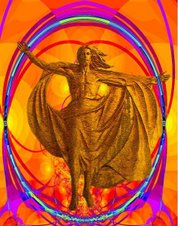
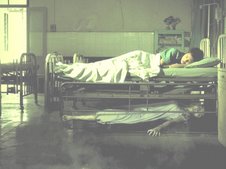
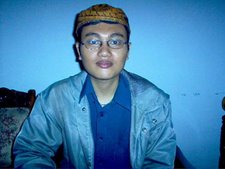

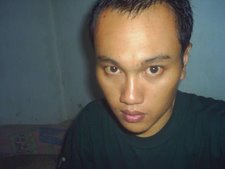
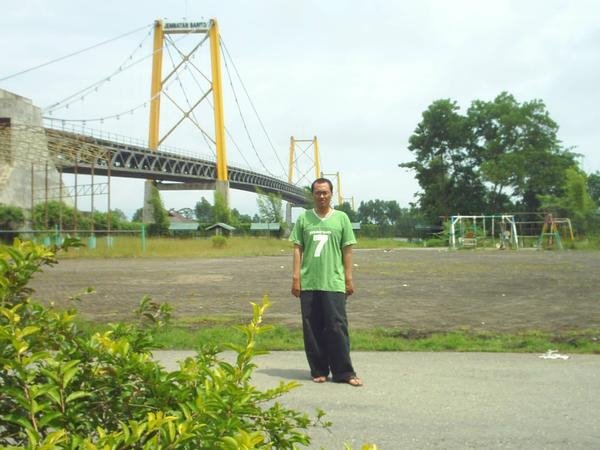
No comments:
Post a Comment